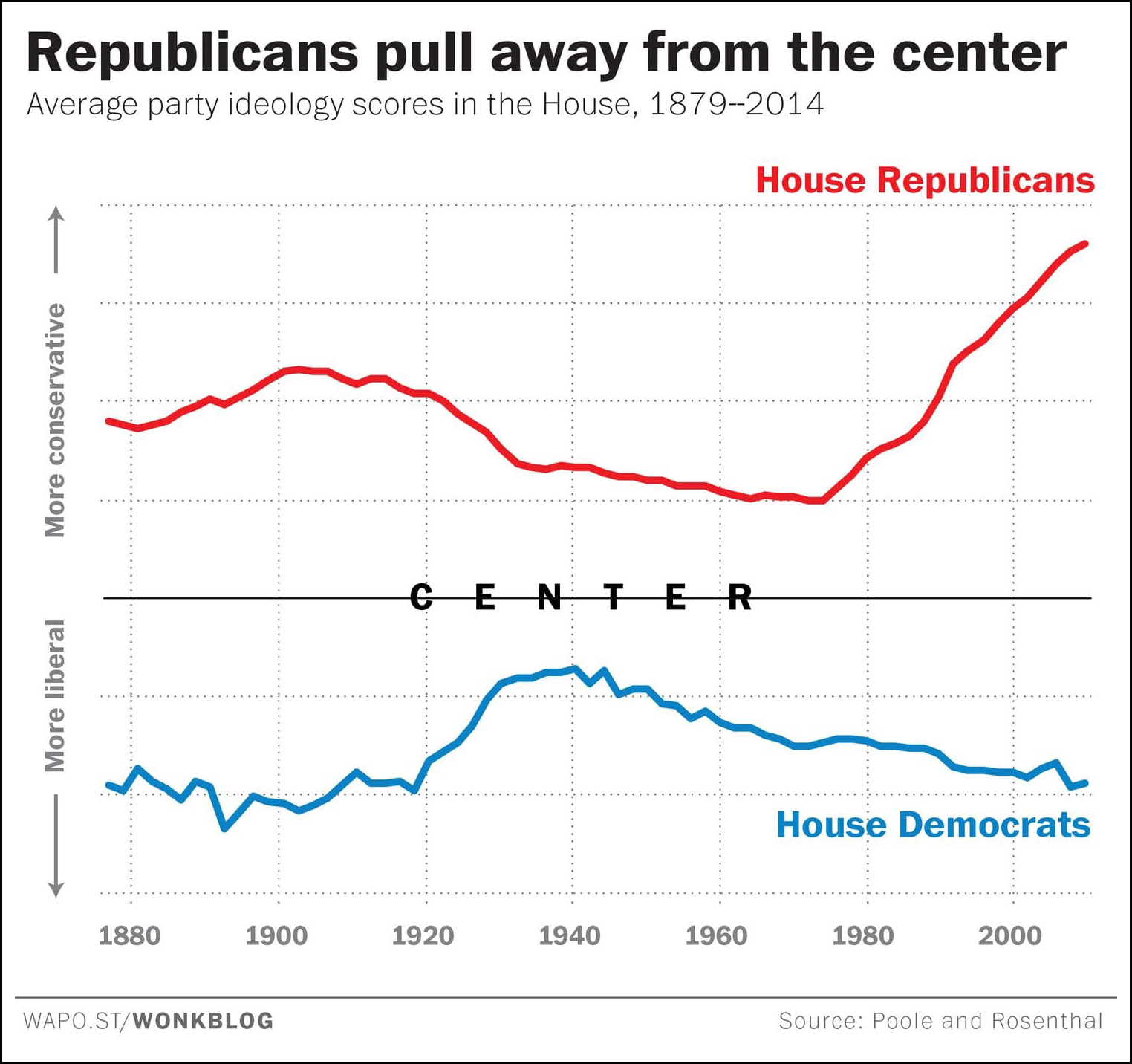In the New York Times today, Sahil Chinoy presents this chart, which compares Democrats and Republicans with political parties in western Europe and Canada. As you can see, the Republican Party is very far to the right:

The impression this leaves is that Republicans have moved to the right while Democrats have stayed close to the middle. But that’s not actually what the chart tells us. All it tells us is that America is generally more conservative than western Europe. But this has always been true. Republicans were calling Medicare “socialism” decades after nearly every country in Europe had adopted national health care.
It would be interesting to see what this chart looked like in, say, 1960 and 1990. For now, though, you can get a sense of what happened to America’s two big political parties by looking at purely American data:

As you can see, back around 1900 the parties were pretty polarized. Democrats spent the next 40 years moving to the center, but ever since the Depression they’ve become steadily more liberal. Democrats are now back to where they were in 1900.
Republicans showed a similar pattern: the party moved toward the center for 75 years, but ever since the Reagan era they’ve become steadily more conservative. By 1990 they were back to about where they were in 1900.
In other words, everything is fairly normal all the way until 1990. The two parties moved back and forth but they both ended up at about the same place: their 1900 position. The difference is all in the years since then.
It’s only since the early ’90s that the Republican Party has become so extreme. As usual, I blame this on Newt Gingrich, the man who invented modern Republican politics. It’s a politics of rage and personal destruction, and the only way to keep that up is to become ever more extreme. It hardly seems possible that this can keep up much longer, but then, we liberals have been saying that for a long time. As Keynes said in a different context, “The market can stay irrational a lot longer than you can stay solvent.” Still, it can’t stay crazy forever. At some point the rage bubble is going to break.

















